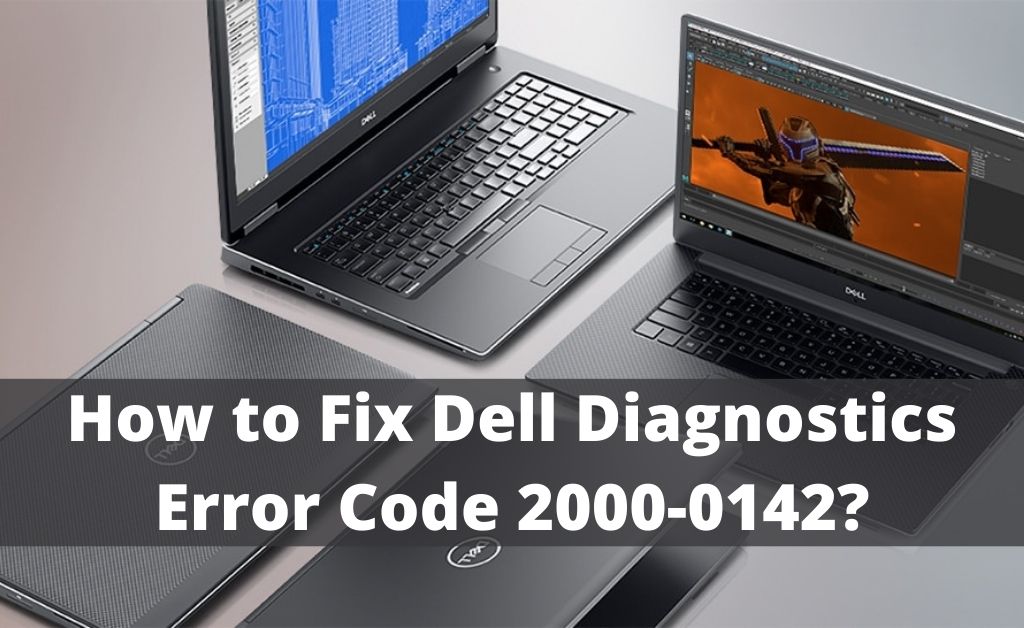
Dell laptops users can face the diagnostic error code 2000-0142 due to various reasons. When you see the message on the screen, you can run the pre-boot system analysis that shows the same message on the computer screen. The possible reasons behind the error are corrupted MBR, bad sectors in HDD or SSD, physical impact on the HDD or SSD and many more.
So, if you are sure about the physical impact on the system that is causing the issue, then it is better not to tweak the storage device. You can repair the MBR, fix the ongoing issue with the SATA cable and many more. All the possible solutions are mentioned below. Before that, you have a few tasks to do.
A Few Things to Do Before You Proceed
You need an external HDD or SSD. Open My Computer or This PC, insert the external drive into your computer. Copy all the necessary folders and files to the drive. Safely remove the storage device from your system. This data backup is necessary because while resolving the error code 2000-0142, you may have to format the internal disk drive.
Let’s Resolve the Issue
With the help of the following methods, hopefully, you can resolve the issue. Make sure that you keep another computer by your side with a recovery application installed. This will serve as an emergency purpose to recover the data loss.
Method 1: Test the Internal HDD or SSD
It seems that you know how to take out the internal HDD or SSD. So, you cannot test the internal drive without a SATA casing. Open the screws and set up the disk drive into the casing. After that, move over to the other computer and plug in the casing. Run the diagnosis and check whether the error code 2000-0142 appears or not.
Method 2: Run Check Disk with Command Prompt
The system dedicated check disk can help to detect any errors in the disk drive. Furthermore, there is a fair chance that you will be able to resolve error code 2000-0142. It seems that you have the bootable storage device ready. Insert it into any one of the USB drives. Restart your computer, the OS will load all the files. After that, follow the on-screen instructions and click on Repair your Computer. Select the OS and click on Proceed. When the System Recovery Options appear, you will see Command Prompt at the bottom. Now, type “chkdsk” and press Enter. In case there is any error the system will resolve it automatically.
Method 3: The Replacement of Storage Drive
It seems that none of the above methods works to resolve the error code 2000-0142. So, the replacement of the internal drive is another good option that you can opt for. Apart from Toshiba and Samsung, most laptop manufacturing companies don’t produce storage devices. So, your Dell laptop may have Toshiba, Seagate or WD internal disk drives. Visit any computer and its accessories retail store and purchase the same disk drive. After opening the package, take out the old drive and replace it with the new one. After that, with the help of the bootable storage device, install the OS.
Method 4: The Data Recovery Process
It seems that to resolve the error code 2000-0142, the internal hard disk drive came across a massive data loss. Previously, you were already being advised to take a backup of all the important data you have. If you have missed it and the data loss occurred, you need to opt for a good data recovery application. As usual, set up the SATA casing and run the recovery process. Hopefully, you will recover more than 80% of the data.
Method 5: Resolve Internal Hardware Faults
A few integrated copper pins come with every laptop and desktop computer. These copper pins provide the connection to access the data in the HDD or SSD. If you witness any pin broken due to outer physical contact, then it is a hardware issue. Eventually, this will resolve the error code 2000-0142 as well.
How to prevent Error code 2000-0142?
Every storage device manufacturer has specific sophisticated tools. These tools will help you take care of the internal and external storage devices. Often, run the full diagnosis to detect any bad sectors. If you find any, the tools can repair the bad sectors. Lastly, protect your system from malware as it can destroy the disk drives.
